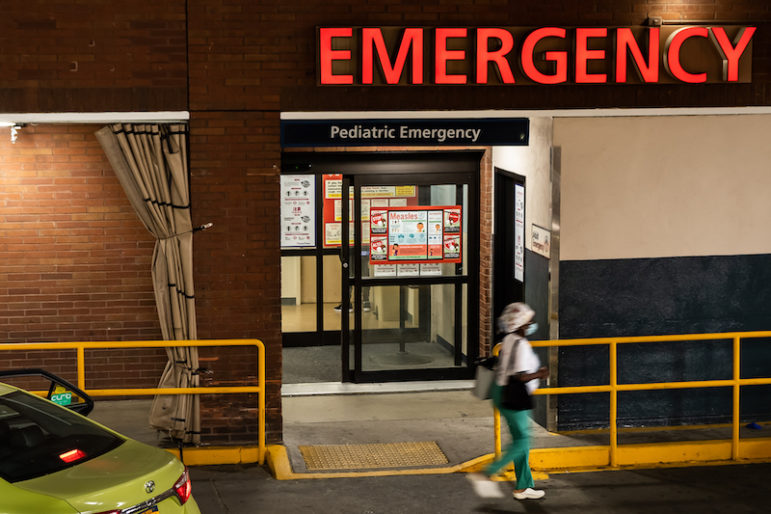The HCZ model might not work in every depressed urban center. But something else might work in those cities—or might already be working, albeit outside the media spotlight or the White House’s embrace.
William Strickland, like Canada, has dedicated most of his adult life to working to counter urban poverty. He established the nonprofit Manchester Bidwell Corp. in 1968, in Pittsburgh’s toughest district, first as an arts education resource for local schoolchildren and later, when Pittsburgh’s steel industry collapsed, to provide vocational training for unemployed workers. Today, the corporation works with Pittsburgh public schools, placing artists in the classroom and offering a broad swath of after-school, summer and evening programs for kids and adults.
An overwhelming majority of teenagers who participate in Strickland’s programs—90 percent—graduate from high school. Nearly as many go on to college or other postsecondary education. And at least 86 percent of job-training graduates—who can learn culinary arts, lab technology or horticultural skills, among a score of options—go on to paid employment.
A different approach revitalized East Lake Meadows in Atlanta. There, developers bet that building mixed-income housing would be the catalyst for community growth—and so far, it seems, the bet is paying off. Carol Naughton, speaking at “Changing the Odds,” says that “the depth of the distress was liberating” in East Lake Meadows: In 1995, unemployment was rampant; only 13 percent of adults in East Lake Meadows had a job.
Crime was triple that of downtown Atlanta— East Lake marked a murder a week, on average— and 18 times the national average. Only 5 percent of schoolchildren met state-testing standards. “Our ideas, our program, was so audacious that nobody believed it would work,” said Naughton.
The construction of 542 mixed-income residences—half now occupied at market rates and half subsidized by Section 8 housing vouchers—was enriched by the creation of the Drew Charter School, where 84 percent of students now meet state standards for reading and 94 percent for math. The project also includes a community center, early-childhood resources, a YMCA and a public 18-hole golf course. Only 5 percent of adults in East Lake Meadows are now unemployed, another hallmark of the redeveloped neighborhood, which has its own service and support pipeline featuring multiple college partnerships that bring college students into the community and, by doing so, provide living, breathing role models for local schoolchildren.
Other local approaches to combating poverty have been tried from Savannah to Philadelphia to Oakland, with mixed results
The Obama administration’s decision to require school-based approaches to poverty reduction means the Promise Neighborhoods initiative is unlikely to support projects that mirror the Manchester Bidwell or East Lake Meadows models—efforts built around job training and housing, respectively. By the same token, cities like Orlando, Fla., where the mayor and other civic leaders have launched a series of HCZ-based reforms, cannot apply for funding, because it is restricted to nonprofits. States without charter schools, like Washington, may not be legally able to dedicate a public school to Promise Neighborhood development.
Cities where court desegregation rulings require busing cannot provide the centrally located school model that the Promise Neighborhoods require. And efforts already under way are not eligible for the funding either; only newcomers need apply.
The White House did not respond to a request for comment. But Obama’s urban czar, former Bronx borough president Adolfo Carrión, told HCZ’s November conference that the President “fell in love” with Canada’s project. Promise Neighborhoods are “of global importance,” Carrión said. “They are a smart investment in people and in neighborhoods that build strong communities, strong regions and strong countries. It’s an international problem.” He added: ” ‘Do what’s right’ doesn’t work. Let the data speak.”
On a different night in November, Canada found himself in front of a crowd in Springfield, Mass., a struggling city of 150,000 that some residents hope will be one of Obama’s Promise Neighborhoods. A quarter century after returning to New York to commence his life’s work, 15 years after launching the Harlem Children’s Zone and five years after starting the charter school whose test scores have propelled HCZ into the realm of presidential priorities, Canada is in Springfield to deliver his well-honed message to one segment of his new national audience. Fittingly, his words speak to a nation’s fears.
“I believe the country is in peril. We can’t let America become a second-rate country,” he says. Once again, lithe and elegant in a well-fitted pinstriped suit, Canada palms the mic, striding across the stage, using his body to punctuate his words—now still, now pantomiming a scolding parent, now sidestepping with a dancer’s finesse in front of almost 2,000. “Unless our country fundamentally changes its approach, we are not going to remain a first-rate power in the world.”
“If you love America,” Canada tells the audience, gathered in the city’s rococo symphony hall, “this work is essential.” Other countries “are in a war—a war around how many engineers, how many scientists, how many doctors they can produce.” Other countries, like India and China, are preparing to “dominate the United States.”
“If you love America,” the cadence repeats, “you see a nation that’s not allowing children to reach their potential.” But Canada knows the way out; it’s his way, the Harlem Children’s Zone. “You need a massive infusion of capital and human talent,” he says, echoing the building blocks that underpin the Harlem Children’s Zone. “This is a science we’re creating. All of these problems are solvable. We had a plan at the Harlem Children’s Zone, and it worked.”
There has never been any question about Canada’s commitment to the cause. Nor has there ever been a full answer to the question of whether the Harlem Children’s Zone really works, and if so, how. Now that the federal government wants to model its national antipoverty policy after what Canada has tried in 97 blocks of northern Manhattan, the long-term test of the HCZ model will play out in a score of American cities.
The HCZ experiment has always rested largely on hope. Every morning, the students at the Promise Academy recite this mantra: “We will go to college. We will succeed. This is our promise. This is our creed.” As the program prepares to go national, faith is still its foundation. It still informs the leader. Canada closes his remarks with a reading of his poem “Take a Stand.” He stands center stage, beside the wooden lectern, reading carefully from a printed sheet. But he knows the words by heart, and before long, his eyes are front and forward, the paper forgotten:
So you and I, we must succeed
In this crusade, this holy deed
To say to the children of this land
Have hope.
We’re here.
We take a stand.
Is the pipeline that Canada built in Harlem sturdy enough to sustain Obama’s national anti-poverty agenda? Is it enough to save a nation?
“We are hopefully saying that the Harlem Children’s Zone does work,” says Anne Kubisch. “It’s hard to say, ‘We’re not sure it’s going to work. We can’t expect great outcomes overnight.’ You have to have something that has some success—then everyone wants to be a part of it.”








